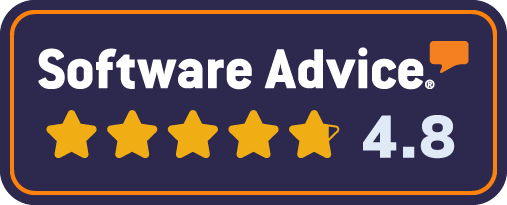Lots of new and niche businesses might think that there isn’t any room left on the internet for organic growth. After all, more than 70% of businesses already have a website, and the opportunities to drive more high-quality traffic to your website have probably all dried up, right?
WRONG.
Because search engines like Google are constantly searching for new and valuable information on a bazillion different topics, there’s always room to climb up the search engine rankings… if you have the right strategy in place.
Let’s take a look at eight of the best ways to bring in more website traffic — and how to convert that traffic into prospects, customers, and even brand ambassadors.
1. Choose the Right Topics & Keywords
To drive more high-quality traffic to your website, you’ll need to identify and target the right content topics and keywords.
Creating content that targets specific keywords is a perfect place to start. One brand used a keyword-based content strategy to increase organic traffic by 65% year-over-year, and there are lots of other examples out there that show similar results.
You’ll need a couple of tools to do this effectively. First, make sure that you have Google Analytics or a similar tracking method installed on your website. This will give you valuable insights into your current level of traffic, as well as which pages on your website are getting the most attention.
Click here to add Google Analytics to your website. (It’s pretty easy.)
Next, use a tool like Ahrefs or SEMrush to identify keywords and topics that you want to rank for. Look for the words and phrases that your prospects will search for when they need a product or service like yours, and use them as the foundation for your on-page content in blogs, subpages, and other content.
2. Publish Regularly
Publishing new content on your website regularly is essential to bring more traffic to your website.
According to a HubSpot survey, most organizations should publish new website content multiple times a month at a minimum, and every day if possible. Websites that publish more often — especially new websites or websites that are new to publishing — are much more likely to draw higher traffic levels than those that don’t.

Image via HubSpot
Pro Tip: If you’re struggling to find room in your schedule to create and publish new content constantly, spend some time updating old or evergreen posts and pages with new links and content. You can even use a third-party extension to track and maintain a schedule of old post updates.
3. Create a Strong Internal Link Ecosystem
Websites that generate a lot of traffic succeed because they give users reasons to stick around. Those reasons often take the form of internal links to related content on other pages.
eCommerce websites have made these types of links into a science. Every product page on Amazon, for example, will have links to similar products, shipping information, informational videos, and other useful places to click… but all of them exist within the larger Amazon “link ecosystem.”
You can build an ecosystem of your own by adding internal link to relevant pages on your website. If you’re publishing a blog about the benefits of having a shipping policy on your website, for example, and you have a shipping policy on your website, link to it in the blog post.

Your link ecosystem should feel more like a rainforest than a desert.
The details will vary depending on your audience and website content, but it’s important to create this type of interconnectivity within your website. Not only will it keep interested parties on your website longer, but it will also show search engines that your site is an authority in your industry.
And it will give you a leg up on the competition — a study by InLinks found that most websites miss over 80% of possible internal linking opportunities.
4. Create a Strong External Link Ecosystem
Building out internal website links is a useful step, but it’s only one part of the equation.
The other part is… every other website in the world (sort of)
Connecting your website to other pages via backlinks is one of the most effective ways to increase a website’s authority and rise up the search engine ranks — which is the primary source of your organic web traffic.
There are a lot of ways to generate these links, from guest blog posts to buying links in online business directories. That includes claiming your social profiles on platforms like Facebook, Instagram, Twitter, etc., and linking to your website from those platforms.
Again, your mileage may vary depending on your audience and industry niche, but backlinks from credible third parties are worth their weight in gold if you’re pursuing web traffic.
5. Use Promotions & Incentives
If you want to build on your existing audience, promotions and incentives are a great way to turn them into brand ambassadors.
Time-sensitive sales, referral programs, discounts for joining your email or SMS lists — all of these can bring interested prospects to your website.
According to data reported by Shopify, promotions and giveaways are a great way to drive traffic to your website, as up to 62% of participants will share the promotion with friends and ask them to take part too.
6. Send Notifications
Speaking of marketing lists, you can send SMS messages or push notifications to your subscribers that link back to your website — specifically, to landing pages featuring limited-time discounts or other reasons to click through to another page.

Given that 54% of web traffic today comes from mobile devices, connecting with your audience on their phones is a great way to increase traffic and keep them engaged.
7. Audit & Optimize Your Website
You won’t have much luck driving high-quality traffic to your website if your website is crap.
Review your website thoroughly to make sure that you don’t have any broken links, missing images, redirects, etc. Tools like Ahrefs and SEMrush, which we mentioned above, are also useful for catching both technical and content problems.
8. Connect with Other Content Creators
Finally, you can increase your web traffic — and grow your brand —by connecting with relevant publishers, influencers, and notable resources in your industry.
These connections can range from guest blogging opportunities, speaking at (or creating) a virtual industry event, sharing valuable social posts besides your own, and more.
All you have to do is ensure that there is at least one link back to a relevant page on your website when the guest post is published, and you’ve got another potential traffic source out there working on your behalf.
Good luck!


